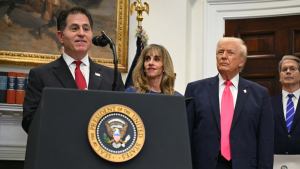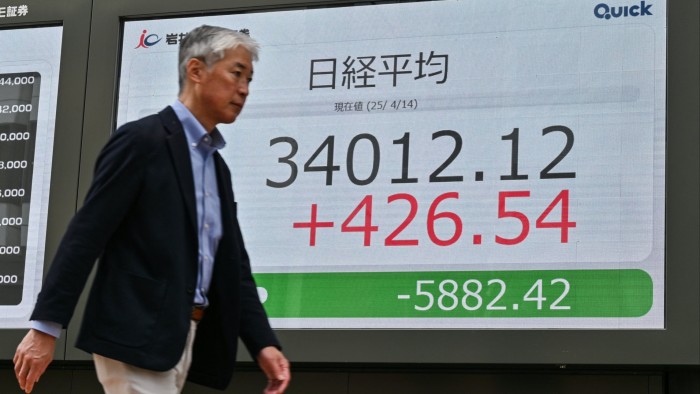Unlock the White House Watch newsletter for free
Your guide to what the 2024 US election means for Washington and the world
Global stocks rose on Monday on signs that consumer electronics imported into the US from China might escape the steepest tariffs President Donald Trump has imposed on the world’s second-largest economy.
Futures tracking the S&P 500 and the tech-heavy Nasdaq 100 were up more than 1 per cent, after the White House late on Friday excluded smartphones and other consumer electronics from steep tariffs it introduced earlier this month, including the 125 per cent levied on China.
Trump and Howard Lutnick, US commerce secretary, on Sunday indicated that such goods would instead be subject to a separate duty the White House was preparing for semiconductors.
It was unclear what level the chips tariffs would be set at, but other duties the Trump administration has imposed on individual sectors such as steel and aluminium suggest they could be substantially lower than the levies currently imposed on China.
“Markets are taking whatever sign of relief they can,” said Mitul Kotecha, head of emerging markets macro strategy at Barclays.
The benchmark Stoxx Europe 600 climbed 1.6 per cent, while the UK’s blue-chip FTSE 100 gained 1.6 per cent.
In comments to journalists on Air Force One on Sunday, Trump said his administration would show “flexibility” for some products and signalled that it would be speaking to key companies to discuss the tariffs.
Asked what the semiconductor tariff rate would be, he told reporters he would “be announcing it over the next week”.
Trump’s sweeping tariffs, announced at a “liberation day” event this month, unleashed turmoil across financial markets and sparked fears of a global recession.
The prospect of lower tariffs on popular consumer electronics would be a boost for Apple and other tech groups that rely heavily on Chinese factories to make iPhones and other goods.
Apple shares jumped almost 6 per cent in pre-market trading.
In Europe, technology stocks led gains, with Dutch chipmakers Besi and ASML up 4.1 per cent and 3 per cent respectively.
But in a sign that investors remain concerned about Trump’s chaotic policymaking and the damage tariffs would inflict on the US economy, the dollar extended its drop on Monday.
The dollar was down 0.8 per cent against a basket of major currencies including the yen and the pound, as investors continued to be wary about increasing their exposure to US assets.
“Clearly the worries about . . . US assets are still in place,” said Kotecha.
The 10-year US Treasury yield, which soared last week as investors took fright over Trump’s escalating tariffs on China, fell 0.03 percentage points to 4.46 per cent.
Haven assets rose. Gold hit a fresh record high of $3,245.75 per troy ounce on Monday before paring back its gains, while the Japanese yen strengthened 0.4 per cent against the dollar to ¥143.
Markets in Asia rebounded, led by Hong Kong’s Hang Seng index up 2.1 per cent, Japan’s Nikkei 225 rising 1.2 per cent and the broad Topix up by 0.9 per cent.
China’s mainland CSI 300 rose 0.5 per cent as official data showed exports from the world’s second-largest economy leapt last month amid a rush to dispatch shipments before tariffs took effect.
Exports rose 12.4 per cent in US dollar terms in March on a year earlier, figures from China’s customs administration showed on Monday, well above expectations and the biggest rise since October.
Imports fell 4.3 per cent, a less steep contraction than the 8.4 per cent fall in the January-February period.
Read the full article here













